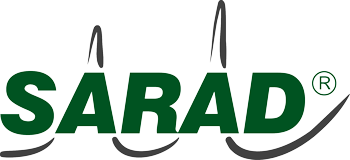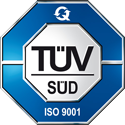FAQ
-

What to pay attention to when choosing a device?
read moreRadon measuring devices are available for a few hundred to a few thousand euros. However, advertising and even data sheets often reveal too little about the properties of the devices and the associated restrictions. It is only after purchase that you realize that a device is unsuitable for the intended application. The measurement of radon is complex, each measuring principle has its advantages and disadvantages. We explain the four most common measurement methods and help you select the optimal device for your application.
-

Which device delivers the fastest measurement result?
read moreIf rapid changes in concentration are to be recorded or measurements are to be carried out in rapid succession at radon concentrations of different heights, devices with real α spectroscopy are always the first choice. These use either semiconductor detectors with electrostatic deposition or a multi-wire ionization chamber. With all other measurement methods, dynamic changes in concentration are smoothed and the measurement uncertainty increases from measurement to measurement.
-

Which measuring device fits my expected radon concentration?
read moreRadon is a very dynamic measure. Concentrations in the range from milli-becquerel to mega-becquerel can occur in the environment. The widest measuring range is provided by devices with electrostatic collection and semiconductor detectors. Some devices have a very limited measuring range, which excludes different areas of application.
-

What about long-term contamination?
read moreLong-term contamination by Polonium-210 occurs in all devices with ionization and scintillation chambers and other devices without real spectroscopy. This results either in too high measured values or increased detection limits and measurement uncertainties. Long-term contamination is irrelevant for measuring devices with semiconductor detectors and spectroscopy. The following text explains why this is the case.
-

What does sensitivity mean? How important is it?
read moreThe higher the sensitivity, the lower the statistical uncertainty of the measurement result and the minimum measurable radon concentration. So does a device with higher sensitivity always deliver the more precise values? No. Under field conditions, devices without real spectroscopy must compensate for background signals, which results in an increase in statistical uncertainty and detection limit. Spectroscopic devices with significantly lower sensitivity then provide equally good or better measurement results. Read here why this is the case.
-

Is Thoron an issue that affects me too?
read moreThoron is the radon isotope Radon-220. It has a very short half-life and therefore rarely occurs in rooms. However, it is almost always found in the soil air and in a similarly high concentration as radon. It can also be exhaled by building materials containing thorium. If Thoron gets into the measuring chamber of a non-spectroscopic device, this indicates that the radon concentration is too high. The device remains contaminated by the Thoron progeny for a few days. Devices with α-spectroscopy can differentiate between radon and Thoron decays. This means that the correct measured value for both isotopes is always displayed. This property also enables so-called “sniffing” after entry paths into buildings.
-

What advantage do I get from time-resolved radon measurement?
read moreThe continuous, time-resolved radon monitoring with active electronic measuring devices has considerable advantages over the use of passive radon measuring devices. The obligations resulting from the Radiation Protection Act with increased radon concentration can be expensive. By using active radon monitors, you can avoid or reduce these costs.
-

How accurately can I measure radon?
read moreNo matter how we measure a temperature, a length, a weight or even a radon concentration, we will never determine the actual or, in metrology jargon, the "true value" of the measurand as a result. We are always more or less off the mark, but in everyday life the deviations are small compared with our expectations so that we mostly forget this...
SARAD GmbH
Wiesbadener Straße 10
DE-01159 Dresden
GERMANY
Phone: +49 351 65807-22
Fax: +49 351 65807-18
E-mail: info@sarad.de
Subscribe to our e-mail newsletter!


